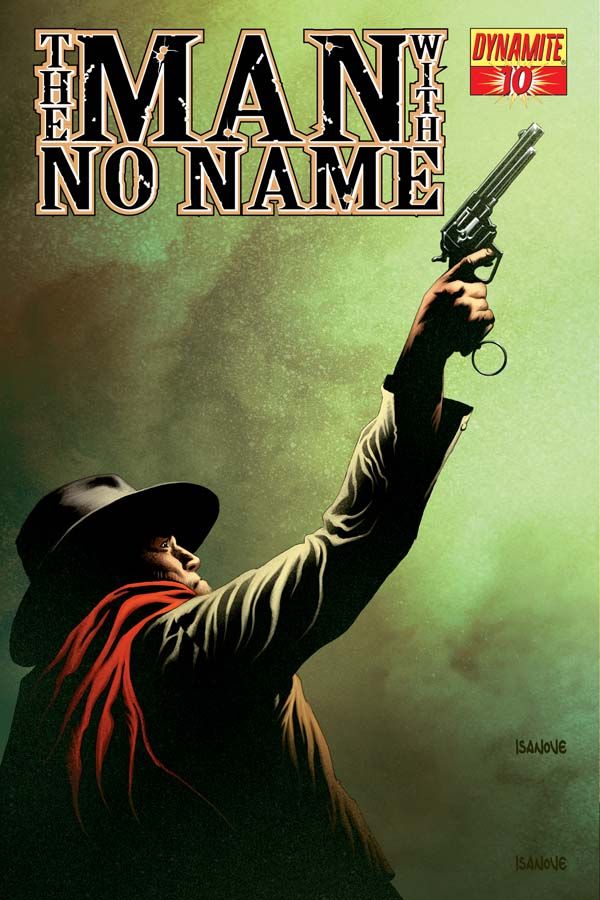"The goal here is to review the comic in and of itself. You really shouldn't be looking beyond it. Stick to the comic. Stick to the comic." You tell yourself this, but how can you when the comic in question, "The Man with No Name" is a licensed property spun off of Sergio Leone's famed film trilogy made up of "A Fistful of Dollars," "For a Few Dollars More," and "The Good, the Bad, and the Ugly"? How can you ignore the connections to one of the most visually stunning and oriented film directors of the twentieth century when examining a related visual artifact? How can you simply 'stick to the comic' when it measures up so poorly, while trying to cash in on the cultural cache of Leone and his work?
You can't. "The Man with No Name" #10 continues the story that reveals how Blondie, Tuco, and Angel Eyes all came to be acquainted, a prequel to "The Good, the Bad, and the Ugly," and it fails to come close to nearly every element that made that film such a classic.
Say what you will about Leone's films, but the plots and dialogue, while having their moments, are not the major draw. Since the films are so visually striking, the art is probably the most important element in a comic book adaptation of that world. Examine the preview pages and ask yourself if these pages have any of the epic compositions, choice angles, or even the coloring of Leone's films. They don't. Diego Bernard and colorist PC Siquera deliver very mundane visuals with slick coloring that lacks the grit of the films. This is a comic and shouldn't be required to match another medium note for note, but the failure here to capture any of Leone's visual style can't be ignored.
Another problem is that characters don't look like they do in the films. This could be a likeness rights problem, but if that's the case, why bother with the license at all? Can you tell that the man in prison at the beginning of the comic is Tuco? If you pay attention to his dialogue, you can guess, but the visual discrepancy is far too great.
Tuco's dialogue is the best part of this comic as Lieberman and Wolpert nail his voice. You can almost hear Eli Wallach saying the lines, they're so dead on, aside from one lame attempt to replicate Tuco's "There are two types of people" line from the film. But, sadly, beyond Tuco's dialogue, there are only a couple of other positives to the writing. The pacing tries to mimic Leone's, taking its time and not rushing through scenes, and the plot is very simple, which works well.
However, the use of two timelines isn't effective, and the characterization of Blondie doesn't quite feel right. For all of Tuco's spot-on dialogue, there's an equal amount of forced dialogue that rings false for Blondie. It reads like they're trying to live up to the reputation of the character and, at the same time, add to the character, two desires that don't really work together.
The writing is adequate, but the lack of visual flair and style really hampers this comic since Sergio Leone's images define much of what people love about this world, and it looks like there wasn't even an attempt to live up to that challenge.

